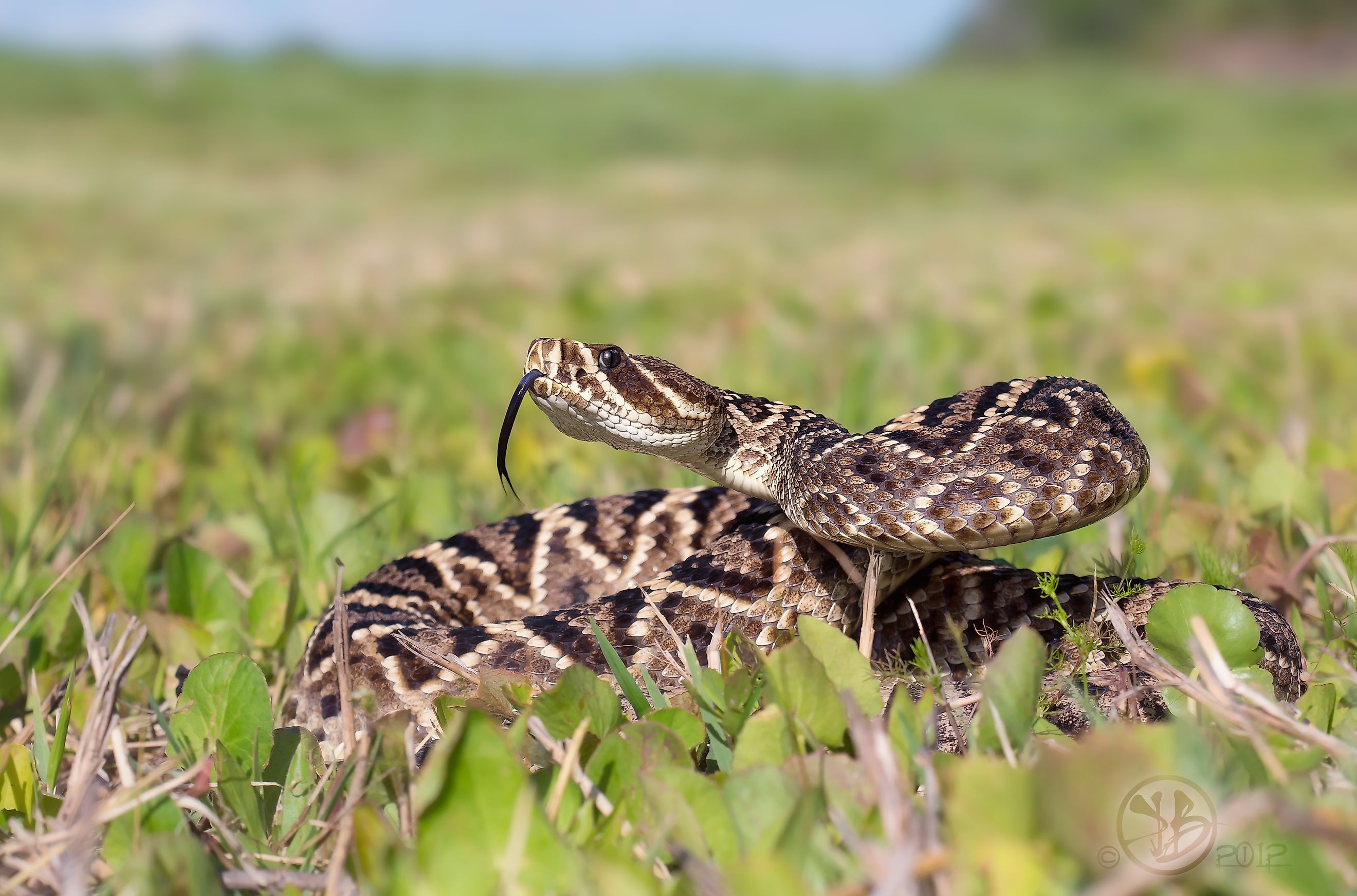
The Venomous Snakes Of Alabama
As a hot, humid place with plenty of natural cover, Alabama is a snake haven. Around 50 species of serpents slither throughout the state. Just six of those are critically venomous. "Critically" means that a bite from said snakes requires immediate medical attention, as opposed to non-venomous or negligibly venomous snakes (such as the hognose snake and garter snake) that pose little threat to humans. Behold the baddest—and coolest—snakes in 'Bama.
Copperhead
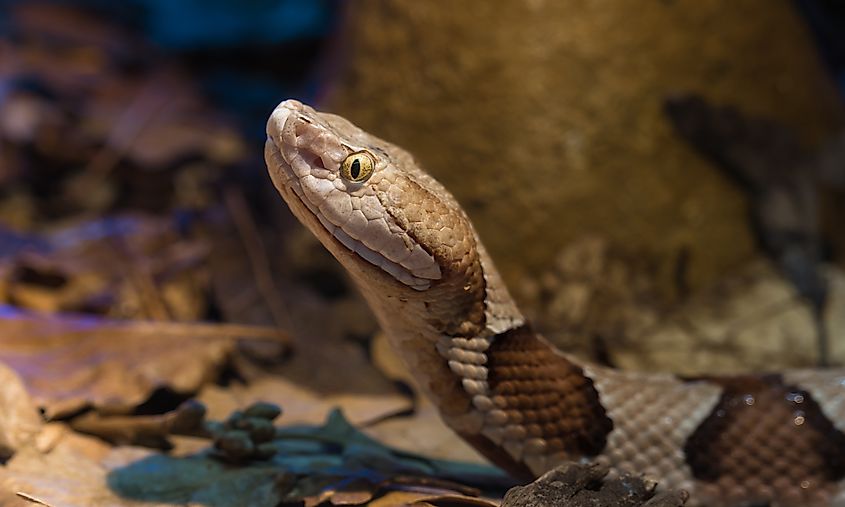
It is far too easy to step on a copperhead (Agkistrodon contortrix). This smallish earth-toned pit viper relies on camouflage for defense, causing quite a few bites via accidental contact. Thankfully, the copperhead has the weakest venom of all the snakes on this list. Furthermore, its bite is sometimes "dry," meaning no venom gets injected. Although insects and mice have little chance against copperhead fangs, humans have a 99.99 percent survival rate. That 0.01 percent is represented in Alabama, where the copperhead is encountered across the state. In 2019, a 52-year-old man was bitten while walking his dog in northern Alabama. He lost consciousness after two minutes and died a couple days later in a Huntsville hospital. It turns out he was allergic to the venom and fell into anaphylactic shock. Another allergic Alabamian died after being bitten in 2004. Watching one's step and carrying an Epipen can raise the copperhead survival rate to 100 percent.
Northern Cottonmouth
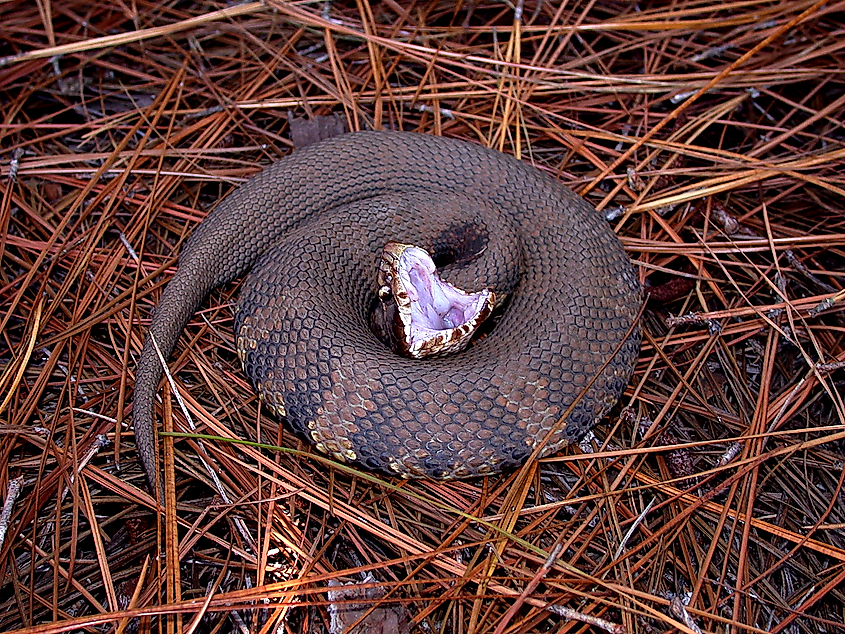
You need to watch where you step—and swim—in cottonmouth territory. Although the copperhead is a capable swimmer, its cousin, the cottonmouth, spends much of its life in water. This stocky pit viper is divided into two species: the Florida cottonmouth (Agkistrodon conanti) and the northern cottonmouth (Agkistrodon piscivorus). Alabama contains the latter. However, since it borders Florida, Alabama is in an area of hybridization between the two species. Hybrids thus slither alongside the northern cottonmouth but have yet to be declared separate species. Though more toxic than those of the copperhead, cottonmouth bites are rarely fatal. In fact, you'd be hard-pressed to find a documented cottonmouth-caused fatality in the state. A Cullman County man was bitten three times by a cottonmouth in 2017 but received antivenin and survived.
Eastern Coral Snake
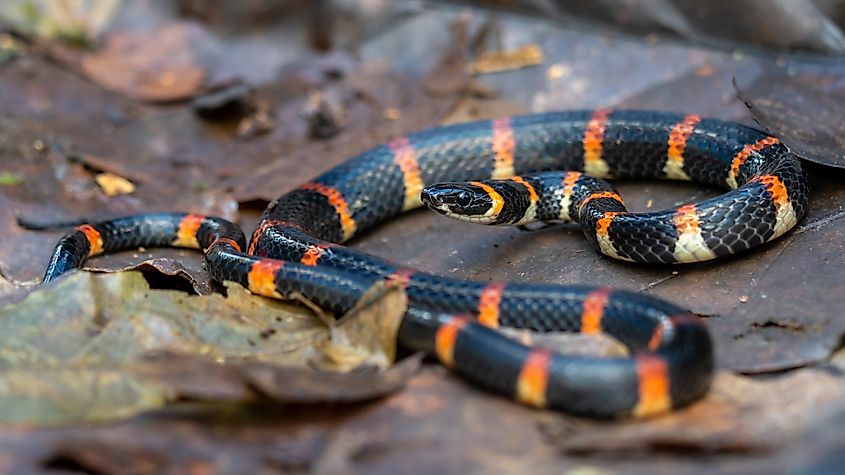
Every critically venomous snake in Alabama is a pit viper except for the eastern coral snake (Micrurus fulvius). It is a member of the Elapidae family, along with cobras, kraits, and mambas. Unlike pit vipers, which have long, foldable fangs that inject hemotoxic (tissue-targeting) venom, elapids have short, fixed fangs that inject neurotoxic (nerve-targeting) venom. Though extremely potent, eastern coral snake envenomations are rare and fatalities have numbered one since 1967, which was the year coral snake antivenin debuted in the United States. The sole documented fatality occurred in Florida in 2006, but a Gilbertown, Alabama man was left paralyzed in 2018 after misreading the "red touches yellow" coloration of a coral snake and handling it like a "red touches black" kingsnake. Virtually all coral snake attacks are provoked since it is conspicuous, docile, and spends most of its life under ground and plant matter.
Pygmy Rattlesnake
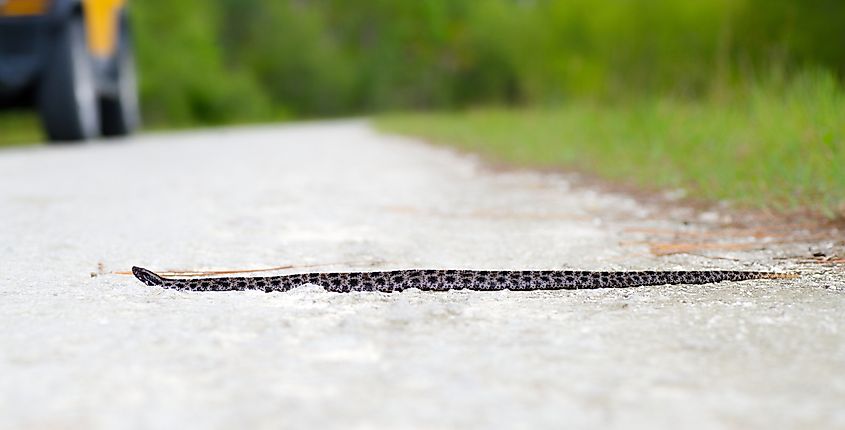
The first of three Alabama rattlesnake species is the pygmy rattlesnake (Sistrurus miliarius), which in turn has three subspecies that all occupy Alabama. The Carolina pygmy rattlesnake (Sistrurus miliarius miliarius) lives in the northeast; the dusky pygmy rattlesnake (Sistrurus miliarius barbouri) lives in the south; and the western pygmy rattlesnake (Sistrurus miliarius streckeri) lives in the extreme western portion of the center. True to their names, all are tiny and produce a tiny amount of venom. But the pygmy rattlesnake is still a rattlesnake, meaning that, despite its size, it has a powerful bite. Though fatalities haven't been recorded, amputations and other serious symptoms are commonplace. Case in point: a Bay Minette, Alabama scout master who was bitten in 2011. The 10-inch snake sent her to the ICU. Days after being released, her left arm and fingers were still double their normal size. Again, this ordeal was caused by a person handling a venomous snake.
Timber Rattlesnake
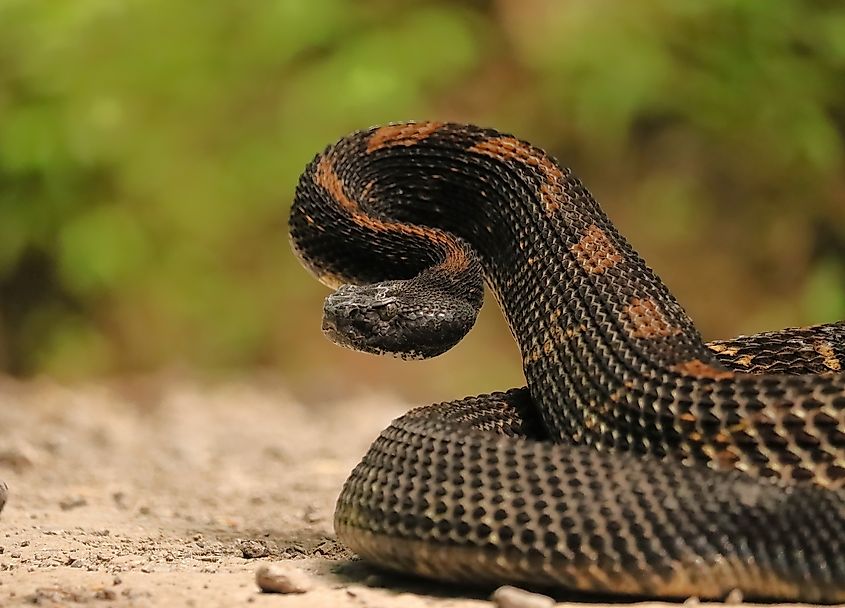
The timber rattlesnake (Crotalus horridus) can be three times as long as the pygmy rattlesnake and inject several times as much venom. Its size and venom yield plus widespread range make it one of the deadliest snakes in the eastern United States, Alabama included. That being said, the timber rattler is typically mild-mannered and prefers to hide in forests and thickets. It takes a lot of provocation to make this rattlesnake bite, such as, say, fondling it barehanded at a religious ceremony. A large portion of fatal timber bites in Alabama were tests of faith during Pentecostal Church services. The most notable of these occurred in 1998 when preacher John Wayne "Punkin" Brown Jr. handled a rattler at a service in Macedonia. He was bitten on the middle finger (reportedly the 23rd bite of his career) and died shortly after. His wife had died snake handling three years prior. They left behind five children.
Eastern Diamondback Rattlesnake
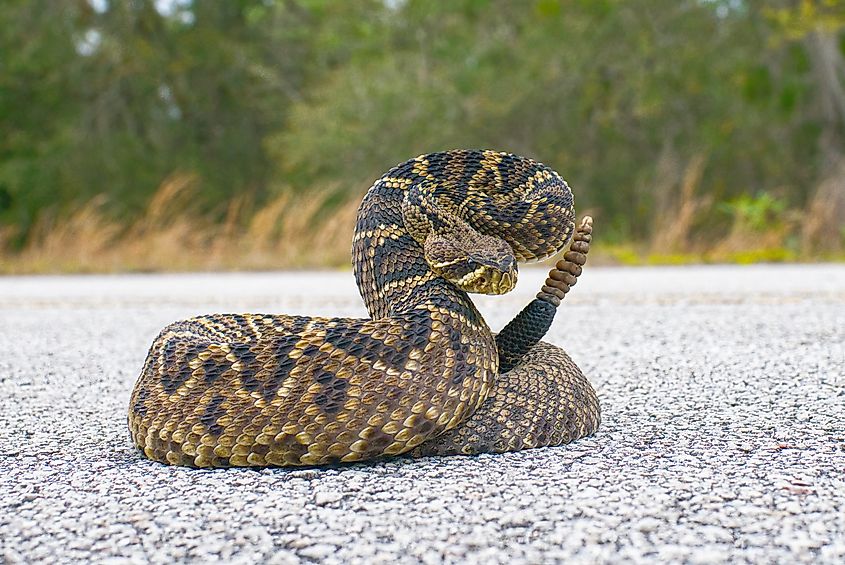
The timber rattlesnake may cause more deaths in Alabama, but the eastern diamondback rattlesnake (Crotalus adamanteus) causes more shivers. Growing up to eight feet long and injecting cupfuls of flesh-melting venom with one-inch fangs, it is the largest and scariest venomous snake in not just Alabama but the entire United States. Thankfully for fearful Alabamians, the eastern diamondback is restricted to the southern part of the state and, like most snakes, does not attack unless threatened. It would rather lie low in fields and woods, waiting for a small animal to cross its path before turning it into prey. A human is far too big to be prey, but keep your feet and legs covered and eyes and ears peeled in diamondback territory to avoid being taste tested.
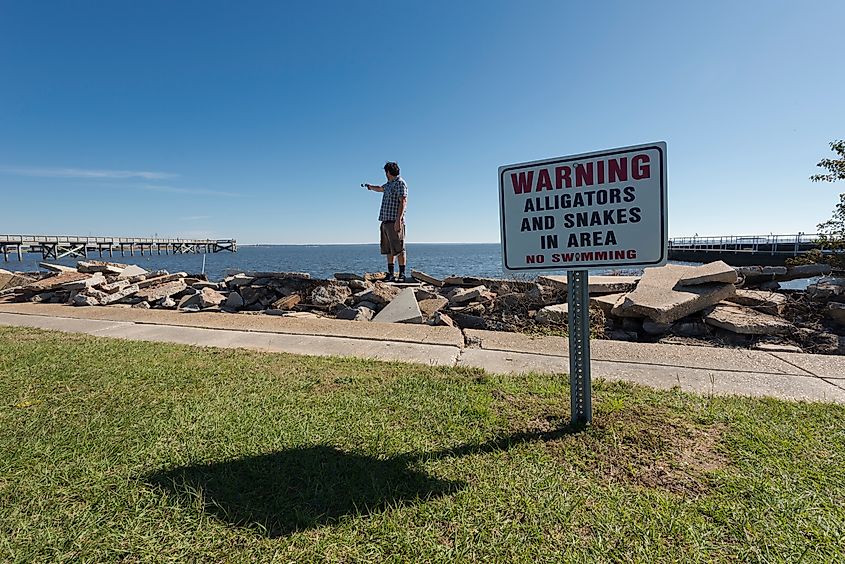
Of the 50ish snake species that inhabit Alabama, only six of them produce venom that is deadly to humans. These are the copperhead, northern cottonmouth, eastern coral snake, pygmy rattlesnake, timber rattlesnake, and eastern diamondback rattlesnake. They vary in size, distribution, and toxicity, but all share the desire to be left alone. Since many venomous snakebites are provoked by humans, a hands-off approach will result in far fewer envenomations. Snake-caused fatalities are already rare but Alabamians can make them hisstory.











